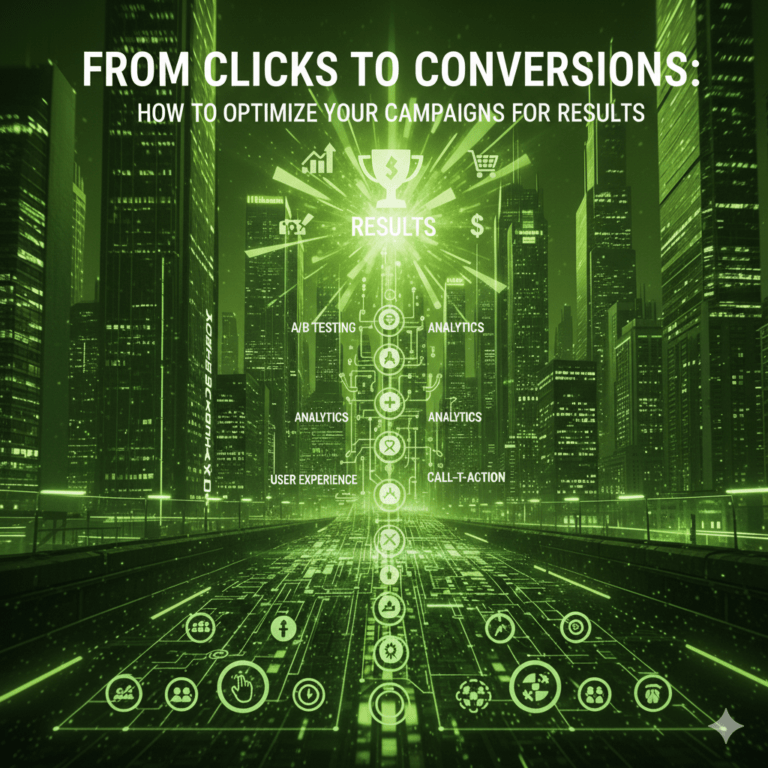1. "From Clicks to Conversions: How
to Optimize Your Campaigns for Results"

Introduction
Getting clicks on your ads or posts is exciting — but clicks don’t pay the bills. Conversions do. Whether your goal is to generate leads, increase sales, or drive sign-ups, optimizing for conversions is what turns traffic into measurable business results.
In this blog, we’ll explore how to bridge the gap between clicks and conversions by optimizing every stage of your marketing campaign.
1. Start with Clear Goals and KPIs
You can’t optimize what you don’t measure. Define what a conversion means for your campaign: a purchase, form fill, newsletter signup, or demo request.
Action Step: Use SMART goals — e.g., “Increase form submissions by 20% in 60 days.”
2. Nail Your Audience Targeting
Irrelevant clicks will never convert. Use detailed audience segmentation to reach the people most likely to take action.
Action Tips:
-
Use lookalike audiences in Meta Ads or Google Ads.
-
Segment by demographics, behavior, and purchase intent.
-
Exclude audiences that already converted to avoid wasting budget.
3. Craft Compelling Ad Copy and Creatives
Clicks often depend on how well your ad grabs attention, but conversions depend on whether your offer resonates.
Best Practices:
-
Highlight a strong value proposition (“What’s in it for me?”)
-
Use clear, action-oriented CTAs (“Get Started,” “Book a Demo,” “Shop Now”)
-
Match the tone to the audience (casual, professional, aspirational)
4. Optimize Landing Pages for Conversions
A great ad can be wasted if your landing page doesn’t convince visitors to act.
Key Elements of High-Converting Pages:
-
Consistency: Match landing page messaging with the ad copy.
-
Clarity: Use a single, strong CTA and avoid distractions.
-
Speed: Ensure your page loads in under 3 seconds (slow pages kill conversions).
-
Trust Signals: Include testimonials, reviews, security badges, or guarantees.
5. Use A/B Testing for Continuous Improvement
Guesswork kills ROI. Test different headlines, CTAs, images, and layouts to see what performs best.
Action Step: Run one test at a time for accurate results — e.g., test CTA button color this week, headline next week.
6. Leverage Retargeting
Most visitors don’t convert the first time. Retargeting helps bring them back.
Examples:
-
Show ads to people who abandoned carts.
-
Offer discounts to visitors who viewed your product page but didn’t buy.
-
Use dynamic retargeting ads that show the exact products users browsed.
7. Analyze, Learn, and Refine
Campaign optimization is never a one-time task. Use analytics tools to understand performance:
-
CTR (Click-Through Rate): Measures ad relevance
-
CPC (Cost Per Click): Measures ad efficiency
-
Conversion Rate: Measures landing page success
-
ROAS (Return on Ad Spend): Measures campaign profitability
Action Step: Double down on high-performing ads and pause underperforming ones quickly.
Conclusion
Clicks are just the beginning — real success comes from optimizing for conversions. By improving audience targeting, ad messaging, landing page experience, and continuously testing, you can turn casual clicks into loyal customers and boost your marketing ROI.